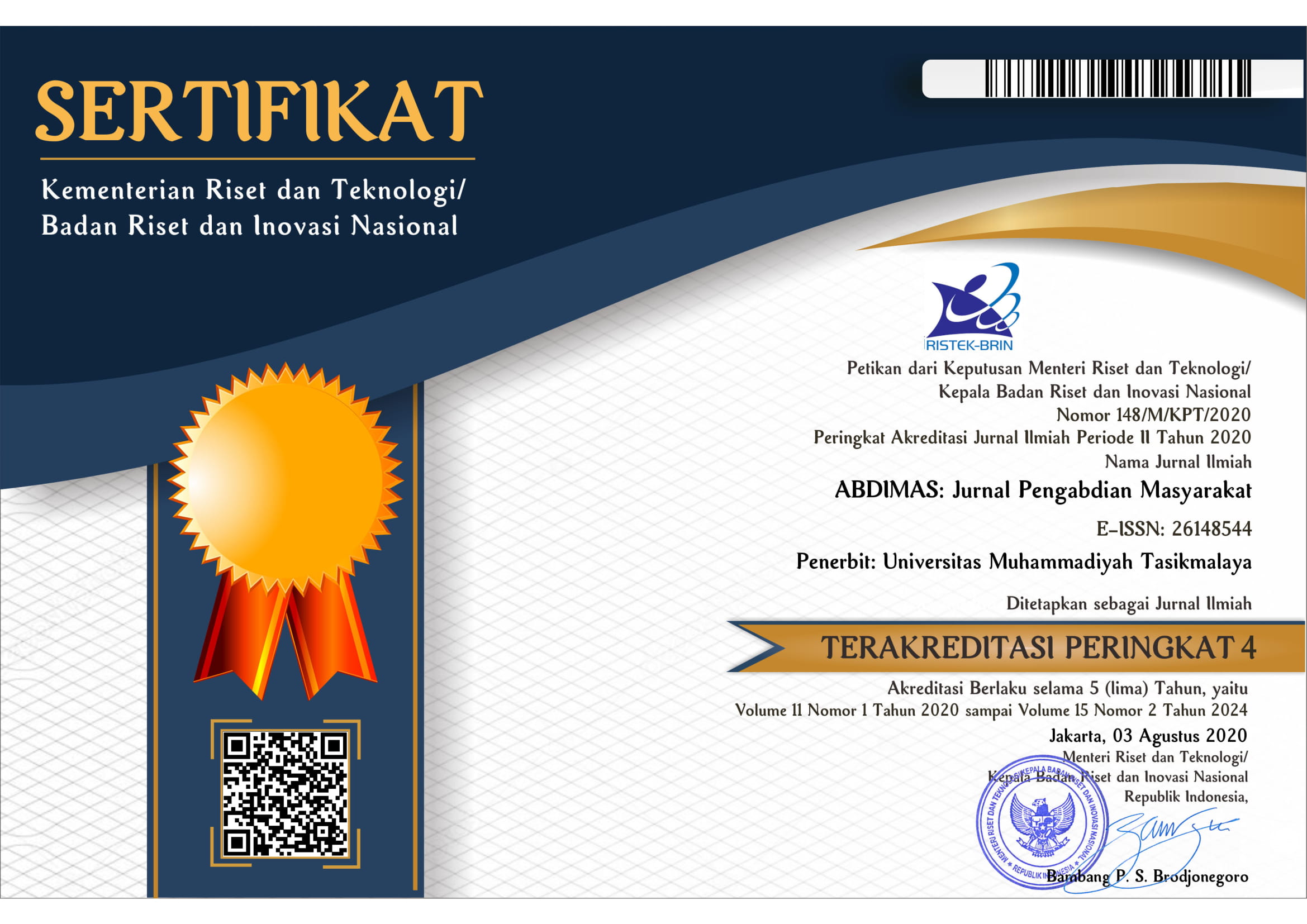An Introduction to the Process of Making the Indonesian Handmade Batik Lasem
DOI:
https://doi.org/10.35568/abdimas.v6i2.3142Keywords:
handmade, batik, acculturation, culture, LasemAbstract
Batik is an Indonesian culture that is appointed as an intangible culture by UNESCO in 2009. Batik in Indonesia is categorized as handmade and stamped according to the production process. Indonesian batik has different patterns and motifs depending on their origin. Batik Lasem is a handmade batik from Lasem of Central Java, Indonesia. Batik Lasem has unique charms and mostly bright colors because it is formed from the acculturation of Javanese and Chines. Batik Lasem is mostly produced in Lasem and it is sold in offline and online shops. This is a report on a project on community services from a collaboration between the author and one of the batik shops in Lasem. The project is creating a tutorial to introduce the making of handmade batik. The main tool and ingredients needed for making handmade batik are fabric, canting, wax, and coloring matter. The tutorial contains an explanation of equipment, material, and step by step on making handmade batik. The output of this project is a video and module for learning the basic of making handmade batik.
Downloads
References
OpenShot Studios. (2023, January 25). Openshot Video Editor. Retrieved from OpenShot is incrediblyamazinglywonderfullyfantasticallyincredibly simple and powerful!: https://www.openshot.org/
Afandi, R. (2014). Perkembangan Industri Batik Lasem Pusaka Beruang Tahun 1965 - 2010. Journal of Indonesian History, 50-54.
Aza, N., Rahardjo, M., & Nugroho, A. A. (2019). Analisis Keuntungan Usaha Batik Tulis Lasem Berdasarkan Skala Usaha di Kecamatan Lasem Kabupaten Rembang. Prosiding Seminar Nasional Fakultas Ekonomi Untidar (pp. 77-87). Magelang: Untidar.
Handhayani, T. (2016). Batik Lasem images classification using voting feature intervals 5 and statistical features selection approach. 2016 International Seminar on Intelligent Technology and Its Applications (ISITIA) (pp. 13-16). Lombok: IEEE.
Handhayani, T., Hendryli, J., & Hiryanto, L. (2017). Comparison of shallow and deep learning models for classification of Lasem batik patterns. 2017 1st International Conference on Informatics and Computational Sciences (ICICoS) (pp. 11-16). Semarang: IEEE.
Irawan, C., Ardyastiti, E. N., Setiadi, D. R., Rachmawanto, E. H., & Sari, C. A. (2018). A Survey: Effect of the Number of GLCM Features on Classification Accuracy of Lasem Batik Images using K-Nearest Neighbor. 2018 International Seminar on Research of Information Technology and Intelligent Systems (ISRITI) (pp. 33-38). Yogyakarta: IEEEE.
Maghfiroh, Q. (2020). Bentuk Batik Tulis Lasem Motif Krecak di Perusahaan Batik Tulis Lasem Sekar Kencana . Jurnal Desain, 61-75.
Ristiani, E., & Haryati, T. (2016). Pengaruh Tenaga Kerja dan Persaingan Usaha Terhadap Produktivitas Usaha Batik Tulis di Desa Babagan Kecamatan Lasem Kabupaten Rembang. Economic Education Analysis Journal, 736 - 746.
Sulaiman, A. I., Sugito, T., Prastyanti, S., Windiasih, R., & Prasetiyo, P. (2022). Student Community Services In Batik Education For The Young Generation. International Journal Of Community Service, 306 - 314.
Suminto, R. S. (2015). Melirik Ciri Khas Batik Lasem. Productum Journal Desain Produk, 22-30.
UNESCO. (2009, October 2). Indonesian Batik. Retrieved July 29, 2022, from unesco: https://ich.unesco.org/en/RL/indonesian-batik-00170#identification














